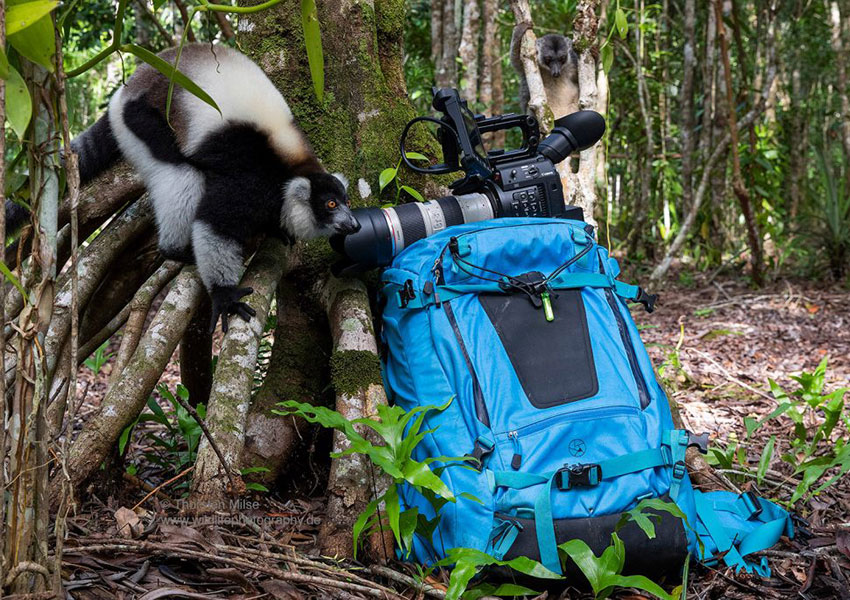

THE WORLD OF LEMURS: BEHIND THE SCENES WITH THORSTEN MILSE
f-stop Ambassador Thorsten Milse is a German nature photographer who specialises in landscape and wildlife photography with a strong focus on conservation and endangered species. He has focused his lens on wildlife from Africa to Antarctica , covering leopards to penguins and kangaroos to walrus – and picking up plenty of awards along the way. Here Thorsten gives a personal glimpse of his next project with the Lemurs of Madagascar …and the gear he’s packing to capture these charming critters…
I’m excited to say that our latest photo and film expedition is to the unique world of the ‚critters of Madagascar‘ – a documentary and story about lemurs! It’s a documentary about the special creatures that only exist here in Madagascar. While the images are cute, the reality of working in this location with large equipment was tough and we had a lot of difficulties, such as a broken camera and heavy thunderstorms. If that wasn’t enough, we even had to contend with plane crashes and raids! This made the trip a real adventure. The equipment I was using was Canon EOS-1DX II cameras, as well as a C200 for film and lenses in the range all the way from 16m to 600mm, as well as Sachtler tripods and fluid-heads, and for transport of course our f-stop backpacks, like the Shinn below capable of carrying such big glass while negotiating this terrain.
We also had to take gear suitable for climbing in the caves of Tsimanampesotse National Park, where we started our trip to the lost world of Lemurs together with a team of US biologists; LEMUR LOVE. More than 100 different species of lemurs are living on the island of Madagascar. All of this family of Strepsirrhiniare are endemic mammals to Madagascar. Of these, the Indri is the biggest lemur and the Mouse lemur the smallest primate in the world. The name lemur comes from the Latin word lemures, which means ’spirits of the night’. Lemurs are prosimians, or primitive primates. They are social animals with long limbs, flexible toes and fingers, and long noses. Each type of lemur looks very different. They vary in colour from reddish brown to gray, and come in all different sizes, too.
Lemurs live in a variety of habitats. Some live in moist, tropical rainforests, while others live in dry desert areas. Lemurs are often seen ’sunbathing‘ in a meditative type position. Because their bellies are not as protected from a colder environment, these animals will warm themselves up by basking in the sunlight before they proceed to their daily foraging activities. Lemurs are also very vocal animals, making a huge range of sounds!
Deforestation of the rainforest and being hunted for meat classify them as Endangered Species. Habitat loss is the main threat to lemurs today, as people clear their native forests for farmland. As of now, 80% of the lemur’s original habitat in Madagascar has been destroyed.
Story: here
More information
watch the movie A Unique World Of Animals
conservation: LemurLove
